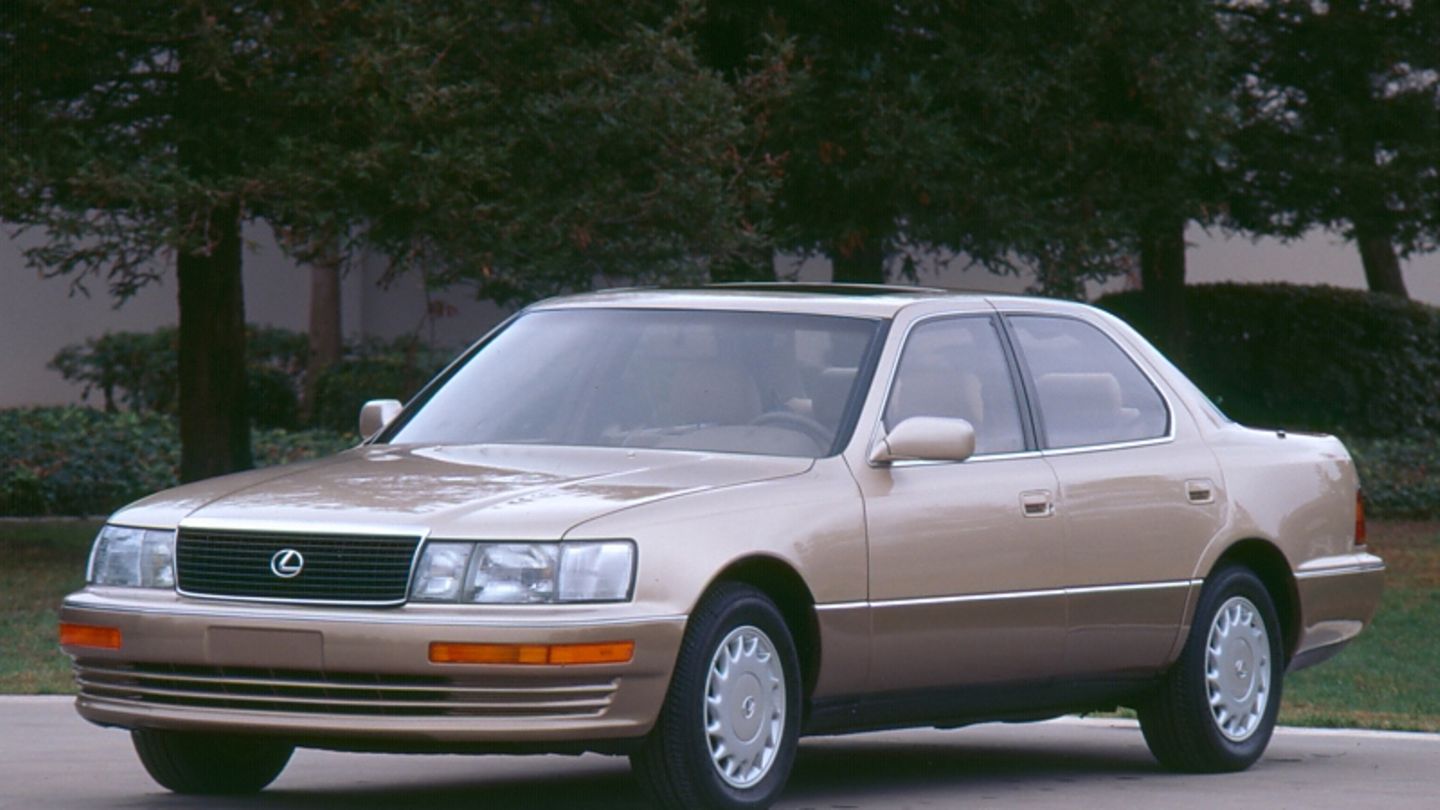The 1980s: Toyota wanted more, Toyota wanted luxury. Because that could hardly be achieved with the main brand, the Japanese corporation created the sub-brand Lexus in the 80s, with which it specifically wanted to attack the German premium competition. The appearance of the first LS 400 was spectacular.
When the Japanese technicians in the development center took apart the Mercedes S-Class, they raved about it – again and again. As it is today, the S-Class, developed expensively and perfectly brought to the streets of the world for its luxury audience, was the measure of all things automotive. But at Toyota in particular, people were self-confident: a luxury sedan like the Mercedes S-Class could also be developed very well apart from all the coping. And in order to be able to position the luxury brand Lexus, as a parallel family to the volume parent Toyota, in the international markets, there was no avoiding an image-rich top model. In the mid-1980s, heavily influenced by the Mercedes S-Class of the W 126 generation, the first Lexus LS 400 was created; Ultimately presented in 1989. Of course, the Japanese development centers also looked at the BMW 7 Series and the luxury models from Cadillac and Lincoln, because Lexus was primarily intended to attract customers in the USA. Since the Lexus brand was only introduced a few years ago in the home market of Japan, the LS was on the road there as the Toyota Celsior.
And the Lexus LS 400 hit the USA like a bomb, because with its flowing forms it looked much more modern and visionary than the Mercedes S-Class, offered uncompromising luxury, a sovereign drive and standard equipment that left hardly anything to be desired. After the world premiere at the Detroit Motor Show in early 1989, 70 exclusive Lexus forums opened their doors in the United States and efforts were made to address precisely those discerning clientele that had previously been well served by German or American luxury sedans. The Lexus forums were not car dealers without an identity, but a mixture of boutique and gallery, which put the new automotive star in the spotlight. But it was not just about the appearance, the positioning and a technically almost perfect vehicle of a completely new brand, but also the price. While the Mercedes 560 SEL, which was at the top end of the range at the time, cost around 110,000 dollars and the S-Class entry-level models (300 SE / SEL) started at over half, the Lexus LS 400 including its full equipment cost less than 40,000 dollars. Quite a few interested parties pondered this and changed camp.
Also because the drive was the measure of all things according to the standards of the late 80s / early 90s. The four-liter V8 naturally aspirated engine ran as smooth as silk and harmonized almost perfectly with the four-speed automatic. Nonetheless, it was a surprise that Lexus took over the top of the best-selling imported vehicles on the US premium market just two years after launching the LS 400. This caused stomach ache, especially at Daimler, because here many comfort and drive details were reworked again in the then newly developed Mercedes S-Class of the W 140 generation, because the BMW 7 series of the E32 generation brought innovations to the 126 series in the home market of Germany such as xenon light, high-tech chassis and the V12 of the 750i, which was produced again for the first time after the Second World War, under pressure.
The five meter long Lexus LS 400 was modern and a real luxury sedan. No trace of the slight US / Asian charm that the other Toyota models and above all the mass-produced Corolla and Camry models offered. The Lexus LS was and remains a luxury today. In the first few years, the customer did not have a choice. Exterior color and interior coloring were almost everything you could choose. In addition, a few equipment details such as a telephone, navigation system or other rims, because otherwise the Lexus LS 400 offered everything with electric leather seats, automatic air conditioning, ABS or sunroof – plus the four-liter V8 with 180 kW / 245 PS and a maximum torque of 353 Nm, which transmitted its power to the rear axle more smoothly than the competition via the automatic transmission. The Lexus LS 400 was replaced as early as 1994, the successor with the internal name UCF20 with its 194 kW / 264 hp was more of a thorough model upgrade, because it wasn’t until 2000 that a completely newly developed model came with the LS 430 of the UCF30 generation.
Unlike in the USA or Asia, Luxus has not yet managed to seriously endanger the established competition of the Audi A8, BMW 7 Series or Mercedes S-Class with its flagship LS in Europe. The sales figures are and have been manageable since the start in the old world and so the used car market is small. But the Lexus LS 400 has a very good reputation for durability and quality, especially after the facelift in 1995. The prices for well-maintained models start at around 5,000 euros, with mileage often exceeding 300,000 kilometers or more. The equipment is consistently complete, the maintenance is often carried out in an exemplary manner and there are significantly fewer previous owners than with the German competition. Good models hardly cost more than 10,000 euros and real market demand is less than small. In return, you drive timeless elegance and enjoy comfort as well as impressive long-distance suitability. The Lexus LS 400 is a real sedan chair with decoupled steering, soft suspension and noticeable pitching and rolling movements that bring long-distance comfort, especially on the motorway.
I am a 24-year-old writer and journalist who has been working in the news industry for the past two years. I write primarily about market news, so if you’re looking for insights into what’s going on in the stock market or economic indicators, you’ve come to the right place. I also dabble in writing articles on lifestyle trends and pop culture news.




